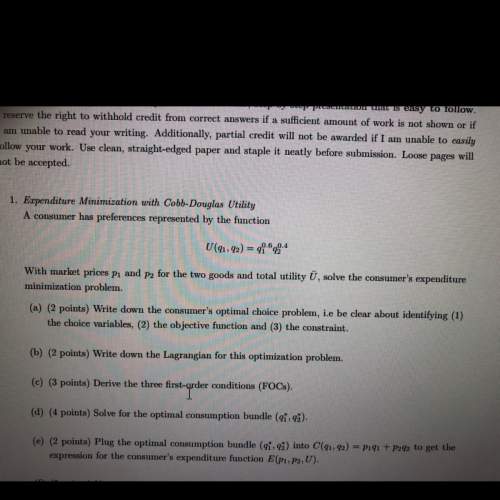*will give brianliest*(08.01)two lines, a and b, are represented by the following equations:
...

Mathematics, 24.10.2019 09:43 sabrinaaz
*will give brianliest*(08.01)two lines, a and b, are represented by the following equations:
line a: 4x + 4y = 16
line b: x + y = 4
which statement is true about the solution to the set of equations?
it is (1, 2).
there are infinitely many solutions.
it is (1, 5).
there is no solution.

Answers: 1


Other questions on the subject: Mathematics

Mathematics, 21.06.2019 14:00, smilingntn33p7pqpp
50 points! antonio made a scale model of a building. the model's scale is 1 inch to 235 feet and its height is 3.5 inches. what is the exact height of the actual building? enter your answer in the box.
Answers: 3

Mathematics, 21.06.2019 19:30, alanaruth3389
Consider a cube that has sides of length l. now consider putting the largest sphere you can inside this cube without any point on the sphere lying outside of the cube. the volume ratio -volume of the sphere/ volume of the cube is 1. 5.2 × 10−1 2. 3.8 × 10−1 3. 1.9 4. 2.5 × 10−1 5. 3.8
Answers: 2

Mathematics, 21.06.2019 22:10, Kurlyash
Atype of plant is introduced into an ecosystem and quickly begins to take over. a scientist counts the number of plants after mmonths and develops the equation p(m)= 19.3(1.089)^m to model the situation. most recently, the scientist counted 138 plants. assuming there are no limiting factors to the growth of the plants, about how many months have passed since the plants werefirst introduced? a)o 6.1b)0.6.6c)10 72d)o 23.1
Answers: 3

Mathematics, 22.06.2019 01:30, Laners0219
Which represents the number of times all outcomes less than a given outcome occur? cumulative frequency relative frequency frequency cumulative relative frequency
Answers: 3
You know the right answer?
Questions in other subjects:


Mathematics, 15.11.2019 09:31


History, 15.11.2019 09:31

English, 15.11.2019 09:31



Mathematics, 15.11.2019 09:31





